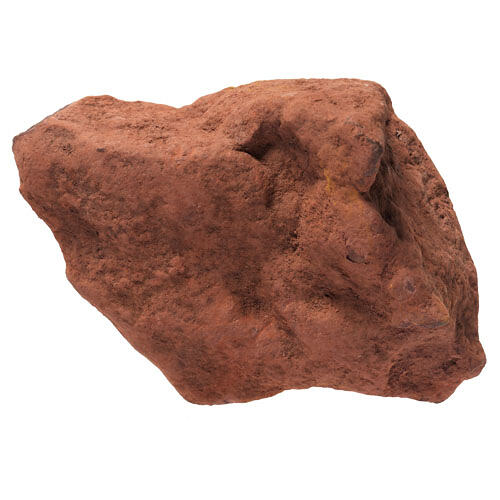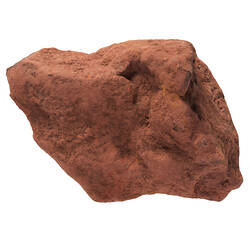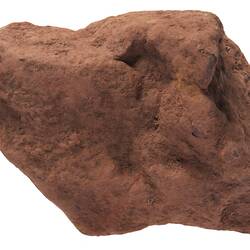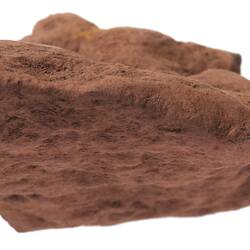Summary
Although ochre deposits are common throughout Australia, certain kinds of red ochre are more highly valued than others; the sites they are mined from are connected to important Creation Stories.
Rebecca Richards, an Adnyamathanha and Barngala woman, learnt the stories and Dreaming attached to important ochre sites in the Flinders Ranges from her uncle and father who were both custodians of these sites. Rebecca is now a custodian of the Bookatoo (Parachilna) ochre mine, and speaks of her custodial responsibilities;
'They taught me the stories and the songs. And it was only once they passed on that I actually knew that Dad actually told my community and my family that. that they had appointed me as custodian. As a custodian, my responsibilities are to look after the land and to uphold whatever restrictions there are placed on that land. And to have someone to be able to take care of those stories and to pass them on to the next generation.'
Rebecca Richards, 2011.
Physical Description
Sample of red ochre. This red ochre comes from the Bookatoo (Parachilna) mine, in the northern Flinders Ranges, on the land belonging to the Adnyamathanha Peoples.
Significance
Red ochre was one of the most important minerals mined and sought after by First Peoples across Australia. It is used as a pigment for a variety of artistic and decorative purposes: it adorns the human body during ceremonies; it is one of the main pigments used in rock art; and many wooden implements were liberally coated with it. Red ochre is also used to decorate and coat jewellery and items made from feathers, vegetable fibre and animal hide and fur.
In the case of the red ochre from Bookatoo mine, it was said to be the blood of a sacred Emu and was famous over a wide region of Central Australia. It was so eagerly sought that the Dieri people, living 500 kilometres to the north in Central Australia, sent armed parties of 70 to 80 men through hostile territories to barter for ochre from the Adnyamathanha. The Dieri considered Bookatoo ochre the 'proper' ochre, and they always used it for their own ritual purposes, but also in trade with people from northern Australia. Usually, highly valued ochre has a silvery sheen caused by an admixture of some other element, such as free mercury (cinnabar) in the case of the Bookatoo ochre deposits.
At times, many different clans would gather near a quarry site to trade for the stone or ochre, and to hold ceremonies, initiations and other important cultural events. Ownership of mines rested with the clan on whose land they occurred, and access was allowed only with the permission of these custodians. The mining was often undertaken by a small group within a clan, with special knowledge of how to correctly extract the resource.
References
Message Stick, Rebecca Richards, 2011, Viewed 14 August 2017
http://www.abc.net.au/tv/messagestick/stories/s3282338.htm
More Information
-
Object/Medium
Mineral sample
-
Cultural Groups
-
Locality
-
Collector
-
Date Collected
-
Object Measurements
100 mm (Length), 70 mm (Width), 50 mm (Height)
-
Classification
-
Date Made
-
Maker
-
Clan/Language Group
-
Place Made
Parachilna Mine, Flinders Ranges, South Australia, Australia
-
Indigenous Region
-
Keywords
-
Collection Names
-
Type of item
-
Discipline
-
Category
-
Collecting Areas



